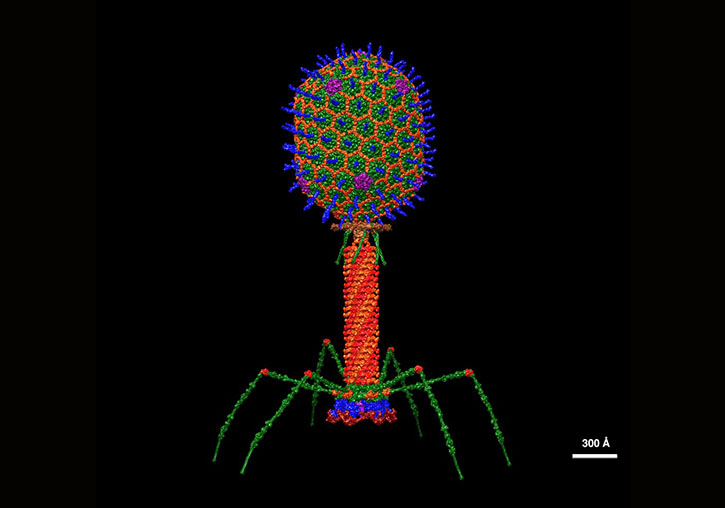Tailored smart molecules to quickly kill resistant bacteria
- Science Park
- March 30th, 2023

A team from the Institute for Integrative Systems Biology (I2SysBio, UV-CSIC) develops a strategy for personalised antibiotics that would avoid bacterial resistance and lower the cost of producing antibiotics based on them. The project has a grant from the ‘la Caixa’ Foundation.
Infections caused by antibiotic-resistant bacteria will overtake cancer as the world’s leading cause of death by 2050, according to the World Health Organization (WHO). Faced with this threat, a research group from the Institute for Integrative Systems Biology (I2SysBio), a joint centre of the University of Valencia (UV) and the Spanish National Research Council (CSIC), develops a molecule based on bacteriophages or phages – viruses that kill bacteria – to cause their death by the depolarisation of the cytoplasm, which causes the cells of the bacteria to not maintain the electrical charge to carry out their vital functions and die irreversibly.
Antimicrobial resistance (RAM) already causes more than 35,000 deaths in Spain, according to the Spanish Society of Infectious Diseases and Clinical Microbiology. In addition, it causes four million serious infections a year. According to the WHO, in 2050 this great threat to public health, which already causes 700,000 deaths per year, could surpass cancer as the leading cause of death, causing 10 million deaths per year.
One of the most promising alternative therapies to conventional antibiotics are bacteriophages, or phages. They are viruses that infect and parasitise bacteria, and are the most abundant biological entities on the planet. Each phage is specific to a certain genus or bacterial species, which allows it to be directed against a specific bacterium. They act like other viruses: they bind to an existing receptor on the bacterial surface and inject their genetic material into it, replicate and destroy it.
However, “bacteria have a defense system that can also make them resistant to phages”, argues Alfonso Jaramillo, a researcher at I2SysBio. His De Novo Synthetic Biology lab has just begun a project to develop a new molecule that looks like a phage but isn’t. “These are headless phages, capable of piercing the bacterial membrane, but without introducing its DNA”, explains Jaramillo.
Thus, these molecules would induce the death of the bacteria by osmotic imbalance. “By making a hole in the membrane, a difference in charge is produced where the ions escape, which causes the osmotic death of the bacteria”, says the CSIC researcher. His team intends to develop these molecules by combining genetic engineering with evolution, thanks to a grant of nearly half a million euros from the ‘la Caixa’ Foundation’s research program.
Phages that are not
The I2SysBio research team intends to use evolution to create antimicrobial molecules based on the proteins produced by phages to insert their DNA into bacteria. To do this, they are going to develop a technology capable of accelerating the evolution of phages a million times, which will make it possible to obtain headless phages (capsids). In addition, it will make it possible to anticipate mutations that could make bacteria resistant and thus adapt antimicrobial molecules to these mutations.
Thus, the antibacterials that will be developed thanks to this project are mere groups of proteins, not viruses. They cannot be replicated in bacteria or in our own body and they will be harmless to beneficial bacteria, which will solve one of the unwanted effects of current antibiotics.
According to Jaramillo, this strategy maintains the advantages of phage therapy that is applied today against ADRs, but allows antimicrobials to be obtained that prevent possible resistance of the bacteria to the phage. In addition, since these are molecules that are not genetically modified organisms, their health authorisation would be easier. It would also be a faster and cheaper method, since the molecules would be obtained by fermentation in bioreactors. The project, which has a duration of 3 years from January 2023, wants to demonstrate that this technology is useful and viable for the production of antimicrobial agents.
File in: Ciencias de la Vida , Ciencias Médicas
















